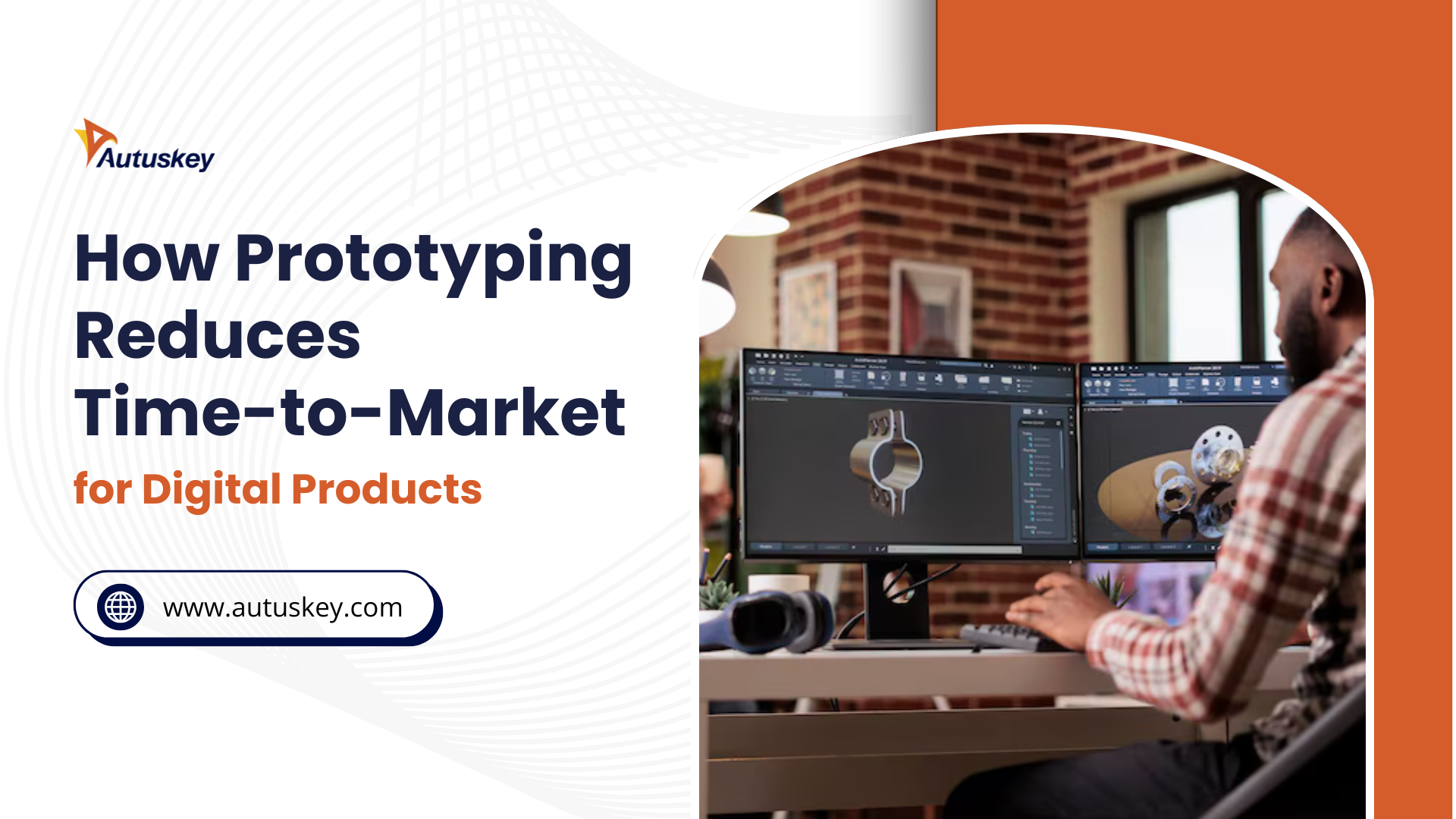
Rated ⭐ ⭐ ⭐ ⭐ ⭐ 4.9

We live in a world where speed is crucial to success. Time to market, or the gap between concept and launch, can determine whether your product thrives or fails. This is especially true in competitive industries like fintech, healthtech, and e-commerce.
Delays can quickly lead to missed opportunities and lost market share. In fact, a McKinsey study reveals that companies who shorten their product development cycles are 60% more likely to gain a competitive edge and outperform rivals.
Prototyping plays a pivotal role in this process by allowing teams to test and validate ideas early. By reducing errors and streamlining decision-making, prototyping accelerates time to market.
In this blog, we’ll explore how prototyping can speed up development and help your team build smarter and faster.
Prototyping involves creating early-stage versions of a digital product to explore and validate ideas. These range from simple wireframes to detailed, interactive mockups. The goal is to test usability and design before writing any code.
It enters the product life cycle just after ideation and before full-scale development. At this point, teams map out core features and user flows. This clarity accelerates design decisions and minimizes future delays.
Notably, McKinsey reports that companies utilizing digital twins, which are a form of advanced prototyping, have reduced development times by up to 50%.
Designers often use tools like Figma, Adobe XD, and InVision to build prototypes. Low-fidelity types sketch rough layouts, while high-fidelity versions offer clickable, near-real experiences. Each form plays a role in aligning teams and collecting feedback quickly.
Ultimately, transitioning to code becomes smoother when visuals are already validated.
With the fundamentals in place, let’s explore how prototyping directly accelerates your product’s journey to market.
Launching digital products quickly is no longer just smart; it’s survival. Fortunately, prototyping drives faster progress and guides teams through feedback and alignment. In fact, it enables testing without unnecessary development delays or workflow confusion.
Let us look at how prototyping reduces time-to-market.
Without a visual guide, product planning often stalls. But when teams use prototypes, decisions accelerate. Stakeholders align faster because they see functionality, not abstract concepts. That changes how discussions unfold.
Instead of long documentation, teams discuss what’s visible and interactive. This visual clarity eliminates early-stage friction.
Moreover, design clarity supports smoother front-end development right from the start. Once aligned, everyone moves faster. Hence, it helps in cutting missteps and setting the pace for efficient execution across departments.
Mistakes in code are expensive. Fortunately, prototypes uncover problems before development even starts. Early detection improves product quality. Subsequently, usability errors appear faster when users interact with mockups, not just specs.
By testing prototypes, design flaws come into focus early. As a result, fixes are quicker.
Since changes happen before any development begins, the team avoids costly rework. Moreover, back-end development also becomes more efficient, as technical dependencies are resolved earlier through collaborative visual planning.
Gathering user feedback after launch slows everything down. On the other hand, prototyping invites user input early. Users respond faster when engaging with interactive mockups, not dense reports or concepts.
Prototypes allow customers to click, explore, and comment. This helps the feedback to arrive early.
This real-time insight guides smarter changes. Rather than guessing preferences, designers know what users want. Even digital marketing strategies improve when informed by early user behavior and design-driven insights.
Miscommunication often causes delays. Prototypes reduce that risk by aligning cross-functional teams around real, shared visuals. Designers, developers, and product leads can interact with one unified version of the idea.
Consequently, fewer meetings are required to explain the flow. The design speaks clearly across departments.
Instead of interpreting documents, website designing and development teams work from a common source. Prototypes speak louder than specs, keeping the product direction aligned across all touchpoints.
Many product teams get trapped in feedback loops. Luckily, prototyping minimizes backtracking during the build phases. Consequently, developers reference a validated design, not vague assumptions. This clears up confusion from the beginning.
Teams avoid rework because layouts and logic are already tested, resulting in changes dropping significantly.
Additionally, developers ask better questions early. Fewer surprises surface mid-sprint. Since visual designs guide technical planning, workflows remain stable. Thus, it enables more efficient front-end and back-end development cycles.
Speed matters most when the market shifts. Thankfully, prototypes allow fast product changes without tech delays. Adjustments happen at the design level, long before the code is affected or shipped.
This agility supports rapid response to customer needs. Furthermore, small pivots won’t interrupt progress.
Design-first iteration also helps teams stay ahead of competitors. When updates are frequent, digital marketing strategies also benefit. Timely UX changes boost campaign effectiveness and lead to faster, smarter growth.
When timelines are tight and expectations high, prototyping becomes your fastest and most strategic move toward market-ready digital products. It helps them to perform well from the start.
To sum up, building a digital product isn’t just about writing code, it’s about getting the idea right early. That’s where prototyping becomes a game-changer. It helps teams spot flaws, refine features, and move faster without wasting time or resources.
From better collaboration to faster feedback, prototypes lead to better products and quicker launches.
At Autuskey, we specialize in turning ideas into interactive, testable prototypes that cut time-to-market. From front-end and back-end development to full-scale website design and digital marketing, we’re here to build what’s next. Get in touch today, and let’s move your product forward faster.CONTACT US
Partner with Autuskey to build a remote, Agile software development team. Partner with Autuskey to build a remote, Agile software development team.

Rated ⭐ ⭐ ⭐ ⭐ ⭐ 4.9